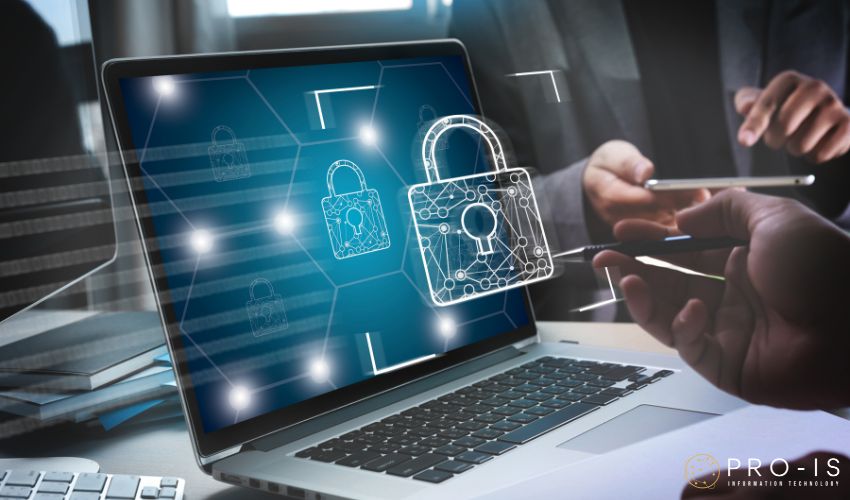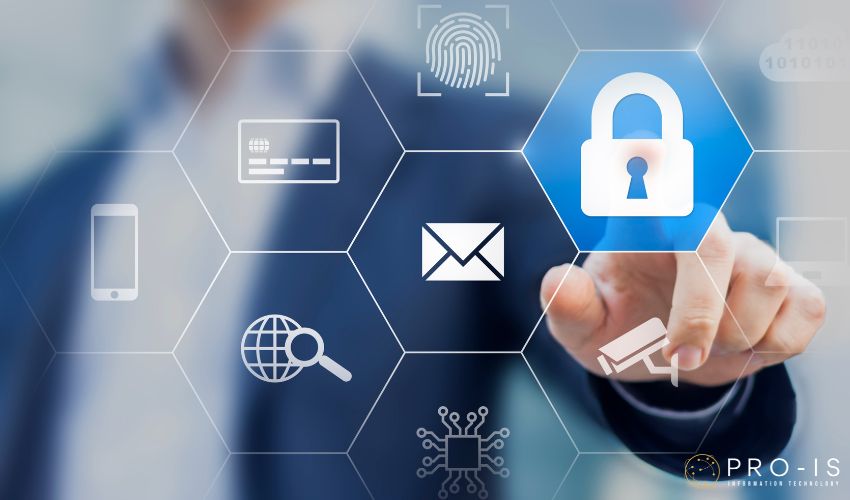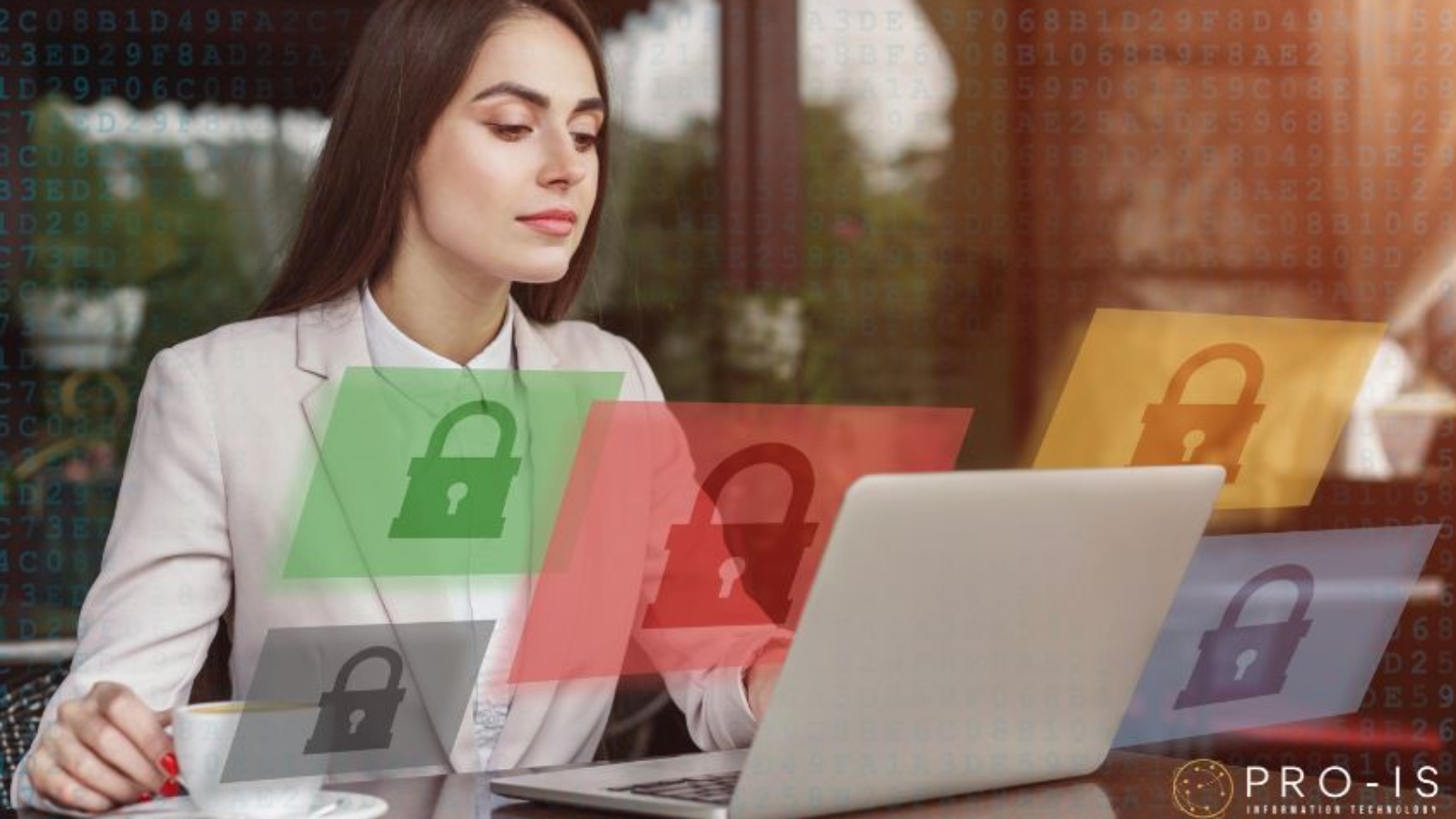In today’s digital landscape, cybersecurity has become a paramount concern for businesses of all sizes. With data breaches and hacking incidents on the rise, companies must take proactive measures to protect their sensitive information. In this comprehensive guide, we will dive deep into the world of cybersecurity, providing you with the tools and knowledge you need to safeguard your business from potential threats.
From understanding the common techniques employed by hackers to implementing robust security protocols, we will explore every aspect of cybersecurity. We’ll discuss the importance of strong passwords, the role of encryption in data protection, and the significance of regular security audits. Additionally, we’ll provide practical tips for training your employees to recognize and respond to potential cyber threats.
Whether you’re a small startup or a well-established corporation, this guide is designed to help you navigate the complex world of cybersecurity. By implementing the strategies outlined here, you can ensure the safety of your business’s sensitive data and continue to thrive in the digital age.

Understanding cybersecurity: What is it and why is it important?
Cybersecurity is the practice of protecting digital systems, networks, and data from unauthorized access, theft, or damage. In today’s highly interconnected world, where businesses rely heavily on technology, cybersecurity has become a critical component of operations. It encompasses a wide range of strategies, tools, and best practices designed to safeguard an organization’s digital assets from the ever-evolving threats posed by cyber criminals, hackers, and malicious actors.
The importance of cybersecurity cannot be overstated. As businesses increasingly rely on digital technologies to store, process, and transmit sensitive information, the risk of data breaches and cyber-attacks has escalated significantly. A successful cyber attack can have devastating consequences, including financial losses, reputational damage, and in some cases, legal liabilities. Furthermore, the growing complexity of modern technology, the proliferation of connected devices (the Internet of Things), and the shift towards remote and hybrid work environments have all contributed to the expansion of the cybersecurity landscape, making it more challenging for businesses to effectively protect their digital assets.
Recognizing the critical role of cybersecurity in the modern business landscape, organizations must prioritize the implementation of robust security measures to mitigate the risks associated with cyber threats. By understanding the fundamentals of cybersecurity and adopting a proactive approach, businesses can enhance their resilience, safeguard their valuable data, and maintain the trust of their customers and stakeholders. In the following sections, we will delve deeper into the impact of data breaches and hackers, common cybersecurity threats, and the essential practices that businesses can implement to fortify their digital defenses.
The impact of data breaches and hackers on businesses
Data breaches and hacker attacks can have devastating consequences for businesses of all sizes. These incidents can result in significant financial losses, reputational damage, and long-lasting legal and regulatory repercussions.
One of the most immediate and tangible impacts of a data breach is the financial cost. Businesses may be required to pay for the remediation of the breach, including the restoration of compromised data, the implementation of enhanced security measures, and the provision of credit monitoring services for affected customers. Additionally, companies may face legal fees, regulatory fines, and the potential for lawsuits from customers or business partners whose sensitive information was compromised. The average cost of a data breach in the United States is estimated to be $4.35 million, according to a 2022 report by IBM and the Ponemon Institute.
Beyond the financial consequences, data breaches and hacker attacks can also inflict severe reputational damage on businesses. When a company’s security is compromised, and customer or client data is exposed, it can erode trust and undermine the organization’s credibility in the eyes of its stakeholders. Customers may lose confidence in the company’s ability to protect their sensitive information, leading to a decline in loyalty and potential loss of business. Furthermore, the negative publicity surrounding a data breach can make it challenging for the organization to attract new customers and partners, ultimately impacting its long-term viability.
In addition to the financial and reputational impacts, data breaches and hacker attacks can also result in legal and regulatory consequences. Businesses may face fines, penalties, and legal actions from government agencies and regulatory bodies for failing to comply with data protection laws and industry-specific regulations. These legal and regulatory repercussions can further compound the financial burden on the organization and divert valuable resources away from core business operations.

Common cybersecurity threats and vulnerabilities
In the ever-evolving landscape of cybersecurity, businesses face a wide range of threats and vulnerabilities that can compromise their digital assets. Understanding these common threats is crucial for developing effective strategies to mitigate the risks.
One of the most prevalent cybersecurity threats is malware, which refers to any malicious software designed to infiltrate, damage, or gain unauthorized access to a computer system. Malware can take many forms, including viruses, worms, Trojans, and ransomware. Ransomware, in particular, has become an increasingly prevalent and devastating threat, as it encrypts a victim’s data and holds it for ransom, often with the threat of public release or permanent deletion if the ransom is not paid.
Another significant threat is phishing, which involves the use of deceptive emails, text messages, or websites to trick individuals into revealing sensitive information, such as login credentials or financial data. Phishing attacks can be highly sophisticated, often mimicking legitimate sources to lure unsuspecting victims into compromising their security.
Distributed Denial of Service (DDoS) attacks are another common cybersecurity threat, where an attacker floods a website or network with traffic from multiple sources, effectively overwhelming the system and rendering it inaccessible to legitimate users. These attacks can disrupt business operations, cause reputational damage, and potentially lead to financial losses.
Businesses also face threats from insider threats, which can come from disgruntled employees, contractors, or other individuals with authorized access to the organization’s systems and data. These insiders may intentionally or unintentionally compromise sensitive information, either for personal gain or due to negligence.
Vulnerabilities in software and hardware can also be exploited by cybercriminals to gain unauthorized access to a company’s systems. Unpatched software, outdated systems, and poorly configured networks can all provide entry points for attackers to infiltrate the organization’s digital infrastructure.
Essential cybersecurity Practices for Businesses
To effectively protect their digital assets from the growing threat of cyber attacks, businesses must implement a comprehensive cybersecurity strategy that encompasses a range of essential practices. These practices are designed to create multiple layers of defense, reducing the risk of successful breaches and enhancing the overall resilience of the organization.
One of the fundamental cybersecurity practices is the implementation of a robust access control system. This includes the use of strong, unique passwords for all user accounts, as well as the adoption of two-factor authentication (2FA) or multi-factor authentication (MFA) to add an extra layer of security. By ensuring that only authorized individuals can access sensitive systems and data, businesses can significantly reduce the risk of unauthorized access and data breaches.
Regularly updating and patching software and hardware is another critical cybersecurity practice. Cybercriminals often exploit known vulnerabilities in outdated systems to gain access to an organization’s network. By keeping all software, operating systems, and firmware up-to-date, businesses can close these security gaps and make it more challenging for attackers to infiltrate their systems.
Implementing a comprehensive data backup and recovery strategy is also essential for cybersecurity. In the event of a successful cyber attack, such as a ransomware incident, having a reliable backup of all critical data can help the organization quickly restore its systems and minimize the impact of the incident. Regular backups, stored both on-site and off-site, can provide a crucial safety net for businesses.
Educating and training employees on cybersecurity best practices is another essential component of a robust cybersecurity strategy. Employees can be the first line of defense against many cyber threats, such as phishing attacks. By providing comprehensive training on recognizing and responding to potential threats, businesses can empower their workforce to be more vigilant and proactive in safeguarding the organization’s digital assets.
Creating a strong password policy
Passwords are the first line of defense against unauthorized access to an organization’s digital systems and data. Implementing a strong password policy is crucial for enhancing cybersecurity and mitigating the risk of password-related breaches.
The foundation of a strong password policy is the requirement for complex, unique passwords for each user account. Passwords should be a minimum of 12 characters long and include a combination of uppercase and lowercase letters, numbers, and special characters. Avoid using easily guessable information, such as names, birthdays, or common dictionary words.
In addition to complexity, businesses should also enforce regular password changes, typically every 90 days. This helps to reduce the risk of compromised passwords being used for an extended period, as well as mitigates the potential impact of a data breach. Employees should be trained to avoid reusing passwords across multiple accounts, as this can lead to a cascading effect if one password is compromised.
Another important aspect of a strong password policy is the implementation of password management tools. These tools, such as password managers, allow users to securely store and retrieve complex passwords, reducing the burden on employees to remember multiple unique passwords. Password management tools also provide additional security features, such as password generation, multi-factor authentication, and secure password sharing, further enhancing the overall security of the organization’s digital assets.
Implementing two-factor authentication
Two-factor authentication (2FA), also known as multi-factor authentication (MFA), is a critical cybersecurity practice that adds an extra layer of protection beyond just a username and password. By requiring a second form of verification, such as a one-time code sent to a mobile device or a biometric identifier like a fingerprint or facial recognition, 2FA significantly reduces the risk of unauthorized access to an organization’s systems and data.
Implementing 2FA across the organization, for both employee and customer accounts, is a highly effective way to mitigate the threat of password-based attacks. Even if a hacker manages to obtain a user’s login credentials, they would still be unable to access the account without the additional verification step. This makes it much more difficult for cybercriminals to gain unauthorized access, effectively creating a more secure digital environment for the business.
Beyond the security benefits, the adoption of 2FA can also enhance user trust and confidence in the organization’s cybersecurity measures. Customers, in particular, are increasingly expecting businesses to offer 2FA as a standard security feature, as it demonstrates a commitment to protecting their sensitive information.
Implementing 2FA can be done through a variety of methods, including SMS-based one-time codes, authenticator apps, hardware security keys, and biometric identification. Businesses should carefully evaluate the available options and choose the solution that best fits their specific needs, user base, and overall cybersecurity strategy.

Securing your network and devices
Securing the organization’s network and devices is a critical component of a comprehensive cybersecurity strategy. By implementing robust network security measures and ensuring the proper configuration and protection of all connected devices, businesses can significantly reduce the risk of unauthorized access, data breaches, and other cyber threats.
One of the essential network security practices is the use of a firewall, which acts as a barrier between the organization’s internal network and the Internet. Firewalls are designed to monitor and control the flow of incoming and outgoing traffic, blocking any suspicious or unauthorized activity. Businesses should ensure that their firewalls are properly configured and regularly updated to address the latest security vulnerabilities.
In addition to firewalls, the implementation of virtual private networks (VPNs) can provide an additional layer of security for remote and mobile workers. VPNs encrypt the connection between the user’s device and the organization’s network, ensuring that all data transmitted over the internet is protected from eavesdropping or tampering.
Securing the organization’s devices, including laptops, desktops, and mobile devices, is also crucial. This includes ensuring that all devices are running the latest operating system and software updates, which often address known security vulnerabilities. Businesses should also consider implementing mobile device management (MDM) solutions to centrally manage and secure the organization’s mobile fleet, including the ability to remotely wipe devices in the event of loss or theft.
Regular network and device security audits, performed by cybersecurity professionals, can help identify and address any existing vulnerabilities or weaknesses in the organization’s digital infrastructure. These audits can provide valuable insights and recommendations for enhancing the overall security posture of the business.
Educating employees on cybersecurity best practices
Employees play a critical role in the overall cybersecurity posture of an organization. Regardless of the technical security measures in place, human error or lack of awareness can often be the weakest link in the chain, leaving the business vulnerable to cyber threats. Educating and training employees on cybersecurity best practices is, therefore, a vital component of a comprehensive security strategy.
The foundation of an effective employee cybersecurity training program is to ensure that all staff members, from the C-suite to the frontline workers, understand the importance of cybersecurity and their individual responsibilities in maintaining the organization’s digital defenses. This includes educating employees on the common types of cyber threats, such as phishing, malware, and social engineering, as well as the potential consequences of a successful attack.
Beyond general awareness training, businesses should also provide specialized, role-based cybersecurity education. For example, employees who have access to sensitive data or critical systems may require more in-depth training on topics like data handling protocols, incident response procedures, and privileged access management. By tailoring the training to the specific needs and responsibilities of each employee, the organization can ensure that everyone is equipped with the knowledge and skills necessary to identify and respond to potential cyber threats.
Regular cybersecurity training and simulations, such as phishing email exercises, can also help to reinforce the importance of vigilance and promote a culture of security awareness within the organization. By continuously engaging employees and testing their ability to recognize and react to cyber threats, businesses can foster a proactive and resilient cybersecurity posture that extends beyond the technical controls.
Choosing the right cybersecurity tools and solutions
In the ever-evolving landscape of cybersecurity, businesses must carefully evaluate and select the right tools and solutions to protect their digital assets. With a wide range of options available, from antivirus software to advanced threat detection and response platforms, it’s crucial for organizations to identify the specific needs and requirements of their business and choose the most appropriate solutions.
One of the fundamental cybersecurity tools is antivirus and anti-malware software. These solutions are designed to detect, prevent, and remove various types of malware, including viruses, worms, and Trojans, from the organization’s devices and networks. Businesses should ensure that all endpoints, including desktops, laptops, and servers, are protected by a reliable and regularly updated antivirus solution.
In addition to traditional antivirus software, businesses should also consider investing in more advanced cybersecurity tools, such as firewalls, intrusion detection and prevention systems (IDPS), and security information and event management (SIEM) platforms. These solutions can provide a deeper level of visibility and control over the organization’s digital infrastructure, enabling the early detection and mitigation of sophisticated cyber threats.
Cloud-based cybersecurity services, such as cloud-based firewalls, virtual private networks (VPNs), and security-as-a-service (SECaaS) offerings, can also be valuable additions to an organization’s security arsenal. These cloud-based solutions often provide scalable, cost-effective, and easily deployable security measures, making them particularly appealing for small and medium-sized businesses with limited IT resources.
When selecting cybersecurity tools and solutions, businesses should consider factors such as compatibility with existing systems, ease of deployment and management, integration capabilities, and the overall cost of ownership. Additionally, it’s essential to ensure that the chosen solutions are regularly updated and maintained to address the latest security threats and vulnerabilities.
Conclusion: Safeguarding your business in the digital age
In today’s highly interconnected and digitally driven business landscape, cybersecurity has become a critical priority for organizations of all sizes. The increasing prevalence of data breaches, hacker attacks, and other cyber threats poses a significant risk to the financial stability, reputational integrity, and long-term viability of businesses across various industries.
By understanding the fundamental principles of cybersecurity, implementing essential security practices, and leveraging the right tools and solutions, businesses can enhance their resilience and safeguard their digital assets from the ever-evolving threats posed by cybercriminals. From creating a robust password policy and implementing two-factor authentication to securing the organization’s network and devices, and educating employees on cybersecurity best practices, a comprehensive and proactive approach is essential for navigating the complex world of cybersecurity.
As the digital landscape continues to evolve, businesses must remain vigilant and adaptable in their cybersecurity strategies. Regular security assessments, ongoing employee training, and the adoption of cutting-edge security technologies can help organizations stay ahead of the curve and maintain the trust of their customers, partners, and stakeholders. By prioritizing cybersecurity as a critical component of their overall business strategy, companies can not only protect their digital assets but also position themselves for long-term success in the digital age.
For medium-sized businesses in Fort Collins, Windsor, Loveland, Boulder, Denver, Timnath, and Northern Colorado, outsourcing managed IT services to a provider like PRO-IS offers numerous advantages. From cost savings and enhanced security to access to specialized expertise and cutting-edge technology, managed IT services enable businesses to focus on their core activities while ensuring their IT infrastructure is efficient, secure, and reliable.
If you’re ready to elevate your business operations and achieve greater success, consider partnering with PRO-IS for your managed IT services needs. With their comprehensive solutions and dedicated team of professionals, PRO-IS is committed to helping medium-sized businesses thrive in today’s technology-driven world. Contact PRO-IS today to learn more about how their managed IT services can benefit your business.

